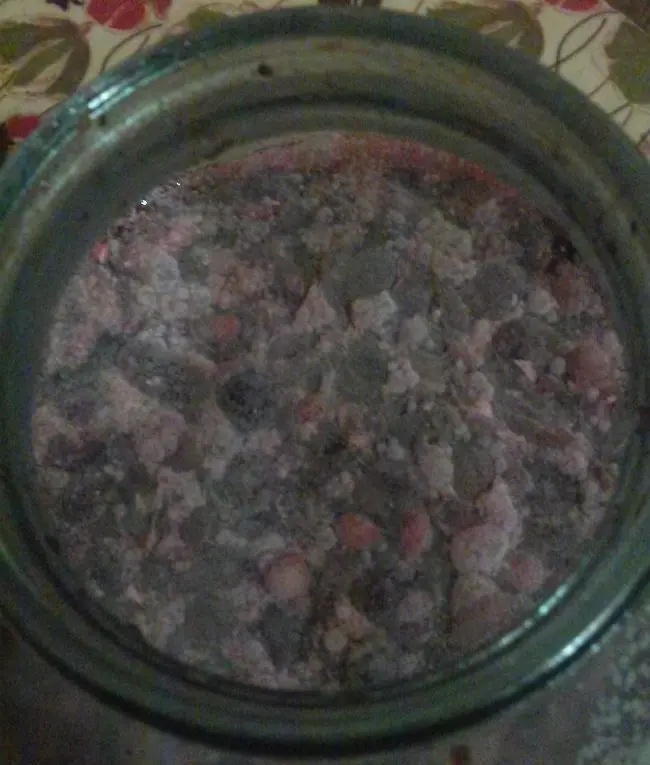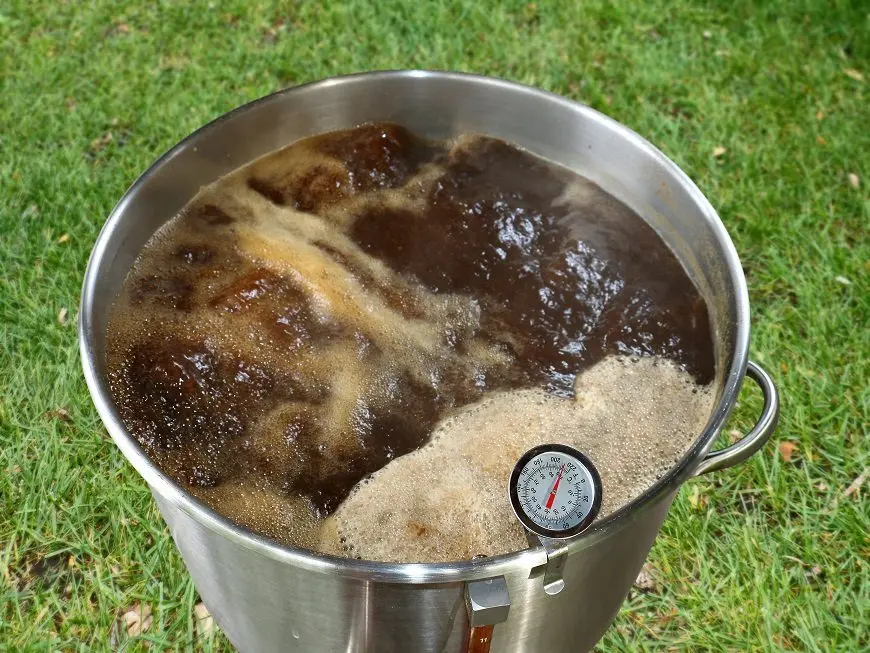Molds process sugar, alcohol and other organic substances into water and carbon dioxide, which reduces the yield of moonshine and worsens its quality. If measures are not taken in time, the mold on the mash can destroy the entire batch of the drink, so you need to act quickly.
Signs and symptoms of infection: first, the mash is covered with a thin white or colorless film, on which barely noticeable grains appear. Over time, these grains grow into circles, and the ball of mold sticks deeper into the wort. The film becomes dark, rough and wrinkled. The mash has a smell of rotten water. At the final stage, the mold sinks to the bottom of the container.



Causes of appearance
For the development of mold on mash, you need:
- fungus spores getting into the must;
- oxygen access;
- temperature +22-28 °C;
- humidity above 85%;
- low acidity;
- the concentration of alcohol in the wort is below 12% vol.
In most cases, mold enters the must along with poorly sorted raw materials: spoiled, rotten or moldy, so the problem is more typical for fruit brews. However, cereals are susceptible to infection (especially during the “cold” saccharification of raw materials with enzymes) and sugar mash.
In traditional “hot” saccharification, the spores of the fungus are destroyed by boiling at high temperatures. If the starch in the grain is broken down to sugars in a “cold” way (by enzymes), an antibiotic is added to the mash to protect against pathogenic microorganisms.
Mold on sugar mash appears due to fungal infection of the sugar itself.
Also, mold spores can be found in poorly washed containers and tools, on dirty hands.
How to save mash from mold
It is advisable to remove the mold only at an early stage of infection, until its ball has become thick and wrinkled.
If the mash is moldy at the end of fermentation and the amount of sugar is minimal, you can only follow the first step of the instructions and immediately distill.
Instructions
- Make a hole in the mold film, through which lower the tube to approximately the center of the liquid layer. Pour the mash into another container without sediment and the top layer of mold.
- Bring grain or sugar mash to a boil, remove from heat, cover and cool to + 25-28 ° C. To preserve the aroma, fruit and berry mashes are not boiled, but heated to 70-75 ° C and boiled for 2-3 minutes.
- After cooling, add a new batch of yeast to the mash, install a water seal and set to ferment.
Attention! Drinking moldy mash is dangerous to health.

Prevention of mold on braga
- Always sterilize equipment and containers with special solutions (10 ml of iodine per 25 liters of water) or at least boiling water. Work with mash only with clean, well-washed hands.
- Carefully sort out raw materials, rejecting spoiled berries and fruits.
- Invert the sugar added to the mash.
- Protect the wort from oxygen access – install a water seal.
- Maintain the normal acidity of the mash (4,0-4,5 pH) with citric acid.
- Control the fermentation temperature in the range of +22-28 °C.









